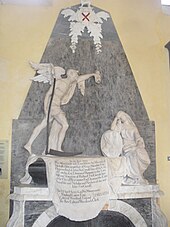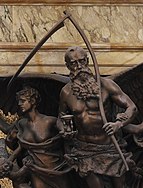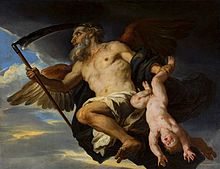
As a literary device or artistic form, an allegory is a narrative or visual representation in which a character, place, or event can be interpreted to represent a meaning with moral or political significance. Authors have used allegory throughout history in all forms of art to illustrate or convey complex ideas and concepts in ways that are comprehensible or striking to its viewers, readers, or listeners.
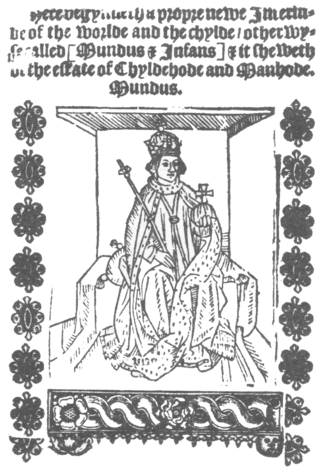
The morality play is a genre of medieval and early Tudor drama. The term is used by scholars of literary and dramatic history to refer to a genre of play texts from the fourteenth through sixteenth centuries that feature personified concepts alongside angels and demons, who are engaged in a struggle to persuade a protagonist who represents a generic human character toward either good or evil. The common story arc of these plays follows "the temptation, fall and redemption of the protagonist".

Chronos, also spelled Khronos or Chronus, is a personification of time in pre-Socratic philosophy and later literature.

A skeleton is a type of physically manifested undead often found in fantasy, gothic, and horror fiction, as well as mythology, folklore, and various kinds of art. Most are human skeletons, but they can also be from any creature or race found on Earth or in the fantasy world.
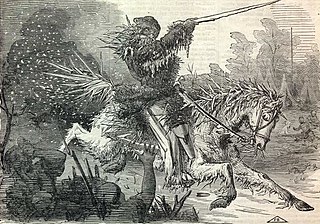
Jack Frost is a personification of frost, ice, snow, sleet, winter, and freezing cold. He is a variant of Old Man Winter who is held responsible for frosty weather, nipping the fingers and toes in such weather, coloring the foliage in autumn, and leaving fern-like patterns on cold windows in winter.

The Sirens of Titan is a comic science fiction novel by Kurt Vonnegut Jr., first published in 1959. His second novel, it involves issues of free will, omniscience, and the overall purpose of human history, with much of the story revolving around a Martian invasion of Earth.
Uta∽Kata is a 2004 anime television series. Written differently (泡沫), the title can refer to bubbles and used as such in the ending theme.

The Palazzo Pubblico is a palace in Siena, Tuscany, central Italy. Construction began in 1297 to serve as the seat of the Republic of Siena's government, which consisted of the Podestà and Council of Nine, the elected officials who performed executive functions. The palace is of medieval and Gothic architecture, and the interior is lined with frescoes--most importantly, the collection known as The Allegory of Good and Bad Government by Ambrogio Lorenzetti.

Venus, Cupid, Folly and Time is an allegorical painting of about 1545 by the Florentine painter Agnolo Bronzino. It is now in the National Gallery, London. Scholars do not know for certain what the painting depicts.
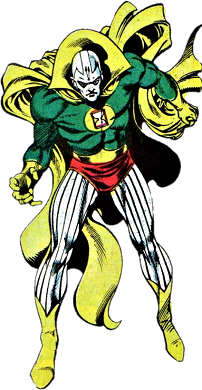
Chronos is the name of several supervillains appearing in American comic books published by DC Comics. These characters take their name from the Greek personification of time and have the ability to time travel. He is the archenemy of the Atom.
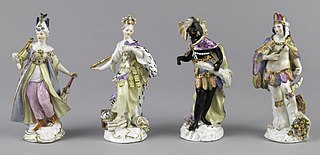
Personification is the representation of a thing or abstraction as a Person. It is, in other words, considered an embodiment or an incarnation. In the arts, many things are commonly personified. These include numerous types of places, especially cities, countries, and continents, elements of the natural world such as the trees or four seasons, four elements, four cardinal winds, five senses, and abstractions such as virtues, especially the four cardinal virtues and seven deadly sins, the nine Muses, or death.

Grim Reaper is a supervillain appearing in American comic books published by Marvel Comics. He is also the brother of Wonder Man.

The Voyage of Life is a series of four paintings created by the American artist Thomas Cole in 1840 and reproduced with minor alterations in 1842, representing an allegory of the four stages of human life. The paintings, Childhood, Youth, Manhood, and Old Age, depict a voyager who travels in a boat on a river through the mid-19th-century American wilderness. In each painting the voyager rides the boat on the River of Life accompanied by a guardian angel. The landscape, each reflecting one of the four seasons of the year, plays a major role in conveying the story. With each installment the boat's direction of travel is reversed from the previous picture. In childhood, the infant glides from a dark cave into a rich, green landscape. As a youth, the boy takes control of the boat and aims for a shining castle in the sky. In manhood, the adult relies on prayer and religious faith to sustain him through rough waters and a threatening landscape. Finally, the man becomes old and the angel guides him to heaven across the waters of eternity.

The Marie de' Medici Cycle is a series of twenty-four paintings by Peter Paul Rubens commissioned by Marie de' Medici, widow of Henry IV of France, for the Luxembourg Palace in Paris. Rubens received the commission in the autumn of 1621. After negotiating the terms of the contract in early 1622, the project was to be completed within two years, coinciding with the marriage of Marie's daughter, Henrietta Maria. Twenty-one of the paintings depict Marie's own struggles and triumphs in life. The remaining three are portraits of herself and her parents. The paintings now hang in the Louvre in Paris.
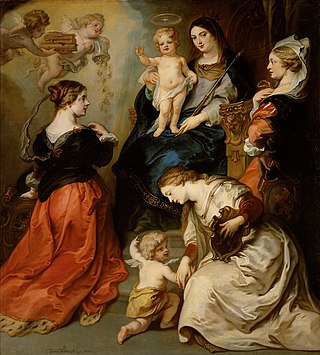
Theodoor van Thulden was a painter, draughtsman and engraver from 's-Hertogenbosch. He is mainly known for his altarpieces, mythological subjects, allegorical works and portraits. He was active in Antwerp, where he had trained, as well as in Paris and his native 's-Hertogenbosch.

Death is frequently imagined as a personified force. In some mythologies, a character known as the Grim Reaper causes the victim's death by coming to collect that person's soul. Other beliefs hold that the spectre of death is only a psychopomp, a benevolent figure who serves to gently sever the last ties between the soul and the body, and to guide the deceased to the afterlife, without having any control over when or how the victim dies. Death is most often personified in male form, although in certain cultures death is perceived as female. Death is also portrayed as one of the Four Horsemen of the Apocalypse. Most claims of its appearance occur in states of near-death.
The Goetic demon Astaroth, whose name is derived from Ashtoreth, the biblical spelling of the name of the Phoenician goddess Astarte, has appeared many times in modern popular culture.

A Vision of the Last Judgement is a painting by William Blake that was designed in 1808 before becoming a lost artwork. The painting was to be shown in an 1810 exhibition with a detailed analysis added to a second edition of his Descriptive Catalogue. This plan was dropped after the exhibition was cancelled, and the painting disappeared. Blake's notes for the Descriptive Catalogue describe various aspects of the work in a detailed manner, which allow the aspects of the painting to be known. Additionally, earlier designs that reveal similar Blake depiction of the Last Judgement have survived, and these date back to an 1805 precursor design created for Robert Blair's The Grave. In addition to Blake's notes on the painting, a letter written to Ozias Humphrey provides a description of the various images within an earlier design of the Last Judgement.

Chronos Ruler is a Taiwanese manhua series written and illustrated by Ponjea. It has also been serialized online via Shueisha's digital publication Shōnen Jump+ from March 2015 to February 2018. An anime television series adaptation by Project No.9 aired from July 7 to September 29, 2017.

Truth, Time and History is an oil-on-canvas painting by the Spanish artist Francisco de Goya. The painting is also known by the titles Spain, Time, and History and Allegory of the Constitution of 1812. It has been assigned dates ranging from 1797 to 1812, though it is most commonly dated between 1804 and 1808. It is currently in the collection of the Nationalmuseum in Stockholm.
